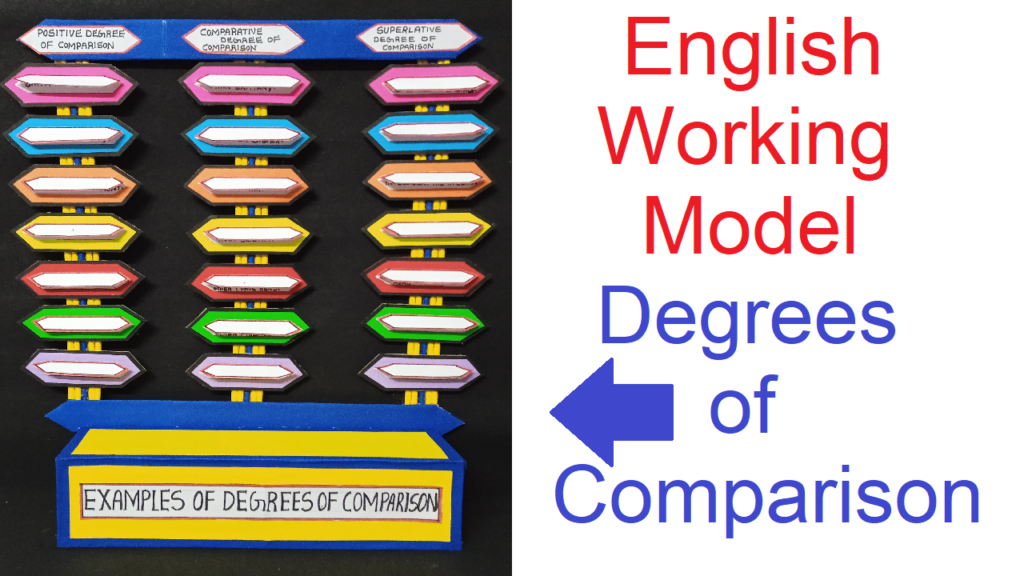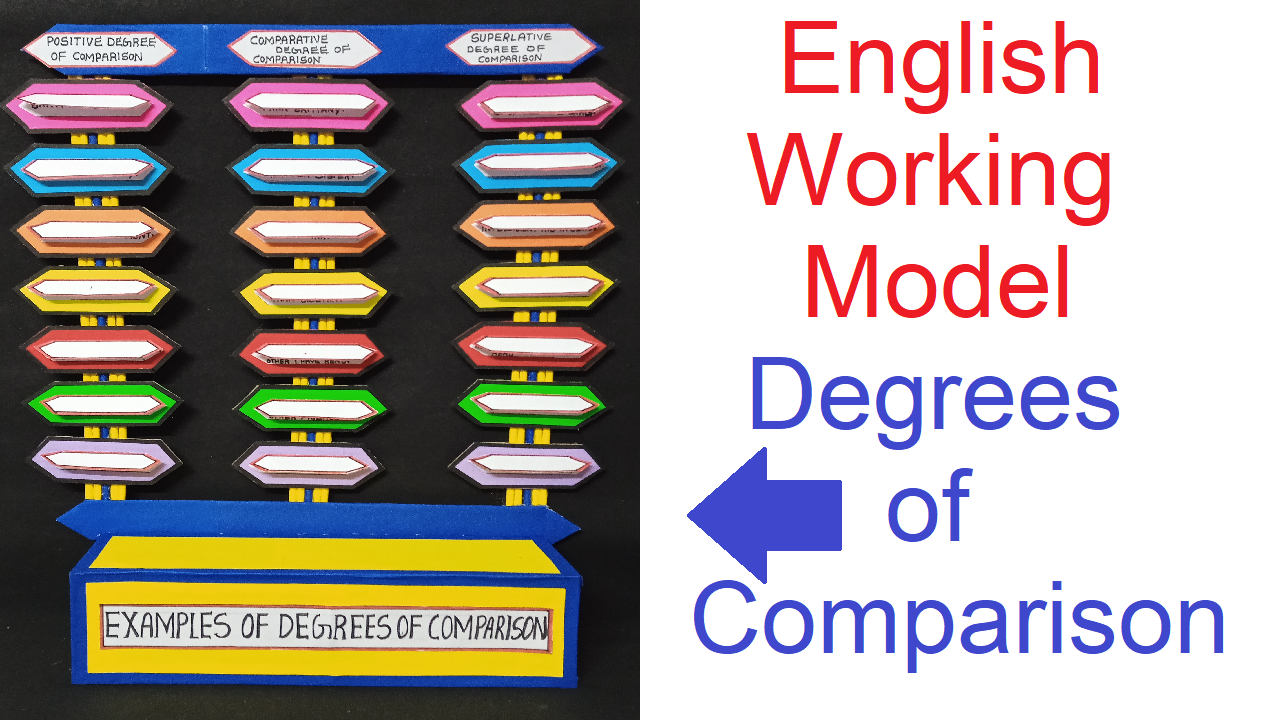Degrees of comparison in English refer to the different forms of adjectives and adverbs used to indicate the intensity or quality of a particular characteristic.
There are three degrees of comparison: positive, comparative, and superlative.
- Positive Degree:
- This is the basic form of an adjective or adverb, used to describe a noun or a verb without making any comparison.
- Example (adjective): The cat is big.
- Example (adverb): She sings beautifully.
- Comparative Degree:
- This degree is used when comparing two things or two sets of things. For most adjectives and adverbs, the comparative is formed by adding “-er” to the positive form.
- Example (adjective): The dog is bigger than the cat.
- Example (adverb): She sings more beautifully than her sister.
- Some adjectives and adverbs have irregular comparative forms:
- Positive: good, bad
- Comparative: better, worse
- Example: This book is better than that one.
- Superlative Degree:
- The superlative degree is used when comparing three or more things or sets of things. For most adjectives and adverbs, the superlative is formed by adding “-est” to the positive form.
- Example (adjective): The elephant is the biggest animal in the zoo.
- Example (adverb): She sings most beautifully of all the contestants.
- Irregular superlative forms include:
- Positive: good, bad
- Superlative: best, worst
- Example: This is the best movie I’ve seen.
Creating a working model to illustrate the degrees of comparison in English using cardboard can be a fun and educational DIY project.

Here’s a simple guide to help you make a visually engaging model:
Materials:
- Cardboard
- Colored markers
- Scissors
- Craft knife (with adult supervision)
- Glue or tape
- Stickers, colored paper, or any decorative materials (optional)
Step by Step Working Model Instructions:
- Prepare the Base:
- Cut a large piece of cardboard to serve as the base for your model. This will be the foundation on which you’ll display the degrees of comparison.
- Create Three Panels:
- Cut three rectangular panels from cardboard, each representing a degree of comparison: Positive, Comparative, and Superlative.
- Label the Panels:
- Write the labels “Positive,” “Comparative,” and “Superlative” on each respective panel using colored markers. This helps clearly identify each degree.
- Positive Degree:
- On the “Positive” panel, write a simple sentence or phrase that represents the positive degree. For example, “The cat is big.”
- Comparative Degree:
- On the “Comparative” panel, create a sentence or phrase comparing two things. For instance, “The dog is bigger than the cat.” You can use cut-out images or draw pictures to represent the comparison.
- Superlative Degree:
- On the “Superlative” panel, form a sentence or phrase that expresses the highest degree. An example could be, “The elephant is the biggest animal.” Again, consider using images or illustrations to enhance understanding.
- Create Standees or Flaps:
- For each panel, cut out standees or flaps from cardboard at the bottom, so the panels can stand upright on the base.
- Decorate (Optional):
- Use stickers, colored paper, or any decorative materials to make your model visually appealing. You can add relevant illustrations or icons to represent the degrees of comparison.
- Attach Panels to the Base:
- Glue or tape the standees or flaps to the base, positioning the “Positive,” “Comparative,” and “Superlative” panels in a way that allows them to stand up.
- Display and Explain:
- Place your model on a flat surface and use it as a teaching aid. Explain the concept of degrees of comparison by pointing to each panel and discussing the examples you’ve written or illustrated.

